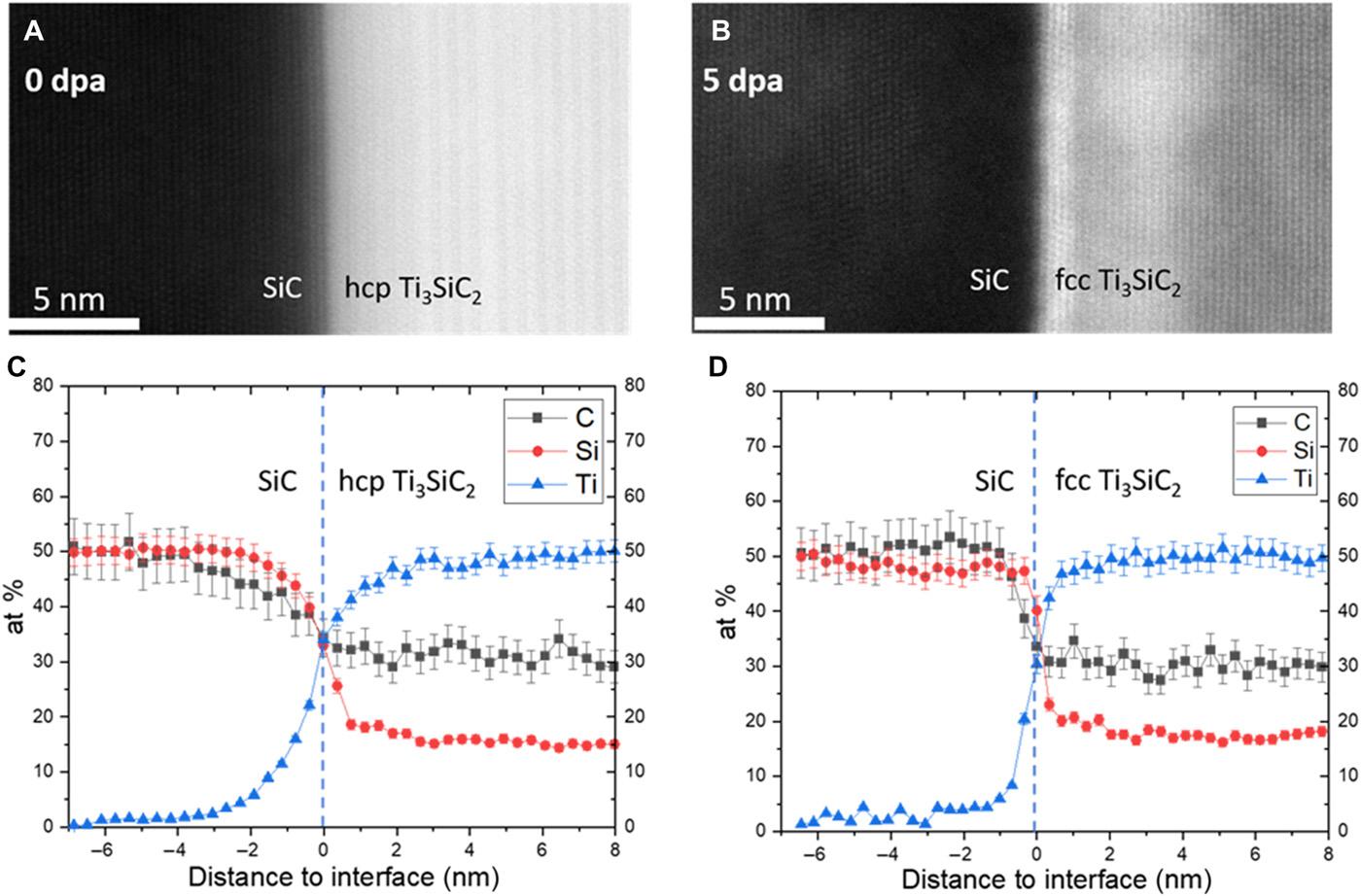Enhancing the phase stability of ceramics under radiation via multilayer engineering
IF 12.5
1区 综合性期刊
Q1 MULTIDISCIPLINARY SCIENCES
引用次数: 5
Abstract
In metallic systems, increasing the density of interfaces has been shown to be a promising strategy for annealing defects introduced during irradiation. The role of interfaces during irradiation of ceramics is more unclear because of the complex defect energy landscape that exists in these materials. Here, we report the effects of interfaces on radiation-induced phase transformation and chemical composition changes in SiC-Ti3SiC2-TiCx multilayer materials based on combined transmission electron microscopy (TEM) analysis and first-principles calculations. We found that the undesirable phase transformation of Ti3SiC2 is substantially enhanced near the SiC/Ti3SiC2 interface, and it is suppressed near the Ti3SiC2/TiC interface. The results have been explained by ab initio calculations of trends in defect segregation to the above interfaces. Our finding suggests that the phase stability of Ti3SiC2 under irradiation can be improved by adding TiCx, and it demonstrates that, in ceramics, interfaces are not necessarily beneficial to radiation resistance.

通过多层工程增强陶瓷在辐射下的相稳定性
在金属系统中,提高界面密度已被证明是辐照过程中引入缺陷退火的有效策略。由于陶瓷材料中存在复杂的缺陷能谱,因此界面在陶瓷辐照过程中的作用尚不明确。在此,我们基于透射电子显微镜(TEM)分析和第一原理计算,报告了界面对 SiC-Ti3SiC2-TiCx 多层材料中辐照诱导的相变和化学成分变化的影响。我们发现,Ti3SiC2 的不良相变在 SiC/Ti3SiC2 界面附近显著增强,而在 Ti3SiC2/TiC 界面附近则受到抑制。对上述界面的缺陷偏析趋势进行的 ab initio 计算解释了上述结果。我们的研究结果表明,Ti3SiC2 在辐照下的相稳定性可以通过添加 TiCx 来改善,这也证明了在陶瓷中,界面并不一定有利于抗辐射性。
本文章由计算机程序翻译,如有差异,请以英文原文为准。
求助全文
约1分钟内获得全文
求助全文
来源期刊

Science Advances
综合性期刊-综合性期刊
CiteScore
21.40
自引率
1.50%
发文量
1937
审稿时长
29 weeks
期刊介绍:
Science Advances, an open-access journal by AAAS, publishes impactful research in diverse scientific areas. It aims for fair, fast, and expert peer review, providing freely accessible research to readers. Led by distinguished scientists, the journal supports AAAS's mission by extending Science magazine's capacity to identify and promote significant advances. Evolving digital publishing technologies play a crucial role in advancing AAAS's global mission for science communication and benefitting humankind.
 求助内容:
求助内容: 应助结果提醒方式:
应助结果提醒方式:


